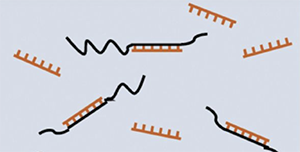| 
The Chloroplast rRNA blocker with the sequence GGCTCAACCCTGGACAG is designed to bind specifically to a sequence in chloroplast ribosomal RNA (rRNA). This blocking mechanism interferes with the function of the chloroplast's ribosomes, which are crucial for protein synthesis within the chloroplast. Chloroplasts, like mitochondria, contain their own ribosomes, which are responsible for translating proteins essential for photosynthesis and other metabolic processes in plants. The Reverse Complementary Sequence (5' to 3') is CTGTCCAGGGTTGAGCC.
Function:
This rRNA blocker inhibits the function of ribosomes in the chloroplast by binding to specific sequences in the rRNA, thereby preventing proper translation of chloroplast-encoded proteins. These proteins are vital for processes such as the assembly of the photosynthetic machinery and energy production in plant cells.
Applications in Biological Research:
-
Microbiome Studies: One of the key applications of such rRNA blockers is in plant microbiome studies. Researchers use these blockers to prevent the amplification of chloroplast rRNA during PCR, which can otherwise contaminate or interfere with the detection of microbial DNA when studying plant-associated microbial communities.
-
Photosynthesis Research: By inhibiting the translation of chloroplast proteins, this blocker helps researchers investigate the role of chloroplast genes and their impact on photosynthesis and plant development.
-
Chloroplast Genetic Studies: The blocker can also be used to explore post-transcriptional modifications and the stability of chloroplast RNA, as well as its regulation by various proteins involved in RNA processing and translation.
This tool is essential for research that seeks to separate plant-derived sequences from microbial ones or to dissect the role of chloroplast genes in photosynthesis and other plant-specific functions. |